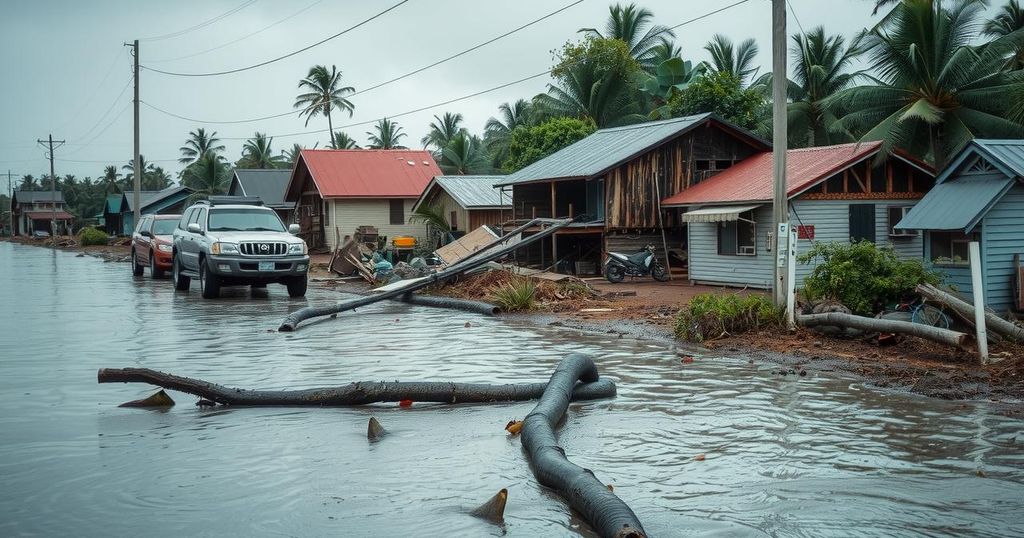Cyclone Chido has caused severe devastation in Mayotte, potentially leading to a death toll ranging from hundreds to thousands, with significant damage to infrastructure and essential services. Aid groups are rushing to assist the island’s population, as concerns grow over access to drinking water and medical supplies. The cyclone is noted as the worst in over nine decades.
Authorities in Mayotte, a French territory in the Indian Ocean, have reported that the death toll from Cyclone Chido could potentially reach thousands following the storm’s devastating impact over the weekend. As aid groups mobilize to assist the recovery efforts, initial estimates from local news indicate at least 20 fatalities; however, François-Xavier Bieuville, a local official, anticipates the actual count may be significantly higher, possibly amounting to several hundred or even a few thousand deaths.
The cyclone made landfall with winds reaching 140 mph, akin to a Category 4 hurricane, and created devastating storm surges between 13 and 28 feet. Most notably, the cyclone has severely damaged Mayotte’s infrastructure, including the closure of the main airport to civilian flights and considerable water damage to the island’s main hospital. Furthermore, a majority of telecommunications services have been disrupted, raising concerns about clean drinking water access, particularly given that most residents live in regions now described as shantytowns.
The French Red Cross has described the situation as “unimaginable,” and initial aid efforts include the provision of drinking water, hygiene supplies, and containers for boiling water. Emergency responders from both France and the neighboring French territory of Reunion are actively engaged in rescue operations to locate survivors amid the wreckage.
Cyclone Chido struck Mayotte, a territory marred by poverty and ongoing immigration controversies, particularly related to asylum seekers from the nearby Comoros Islands. This cyclone has been recorded as the most powerful to hit the region in over ninety years and has resulted in catastrophic damage to homes, vital infrastructures, and the health system. Mayotte’s geographical location and socioeconomic challenges add layers of difficulty to recovery efforts after the cyclone’s aftermath, exacerbating the urgency for aid and restoration.
The devastation wrought by Cyclone Chido in Mayotte poses significant challenges as the death toll is projected to be alarmingly high. The anticipated fatalities underscore the critical need for swift aid and support for the island’s recovering population amidst infrastructural devastation, severe resource shortages, and the potential for further humanitarian crises. With coordination from local and international rescue teams underway, Mayotte’s path toward recovery will require substantial resources and attention as the assessment of the situation continues.
Original Source: www.forbes.com






